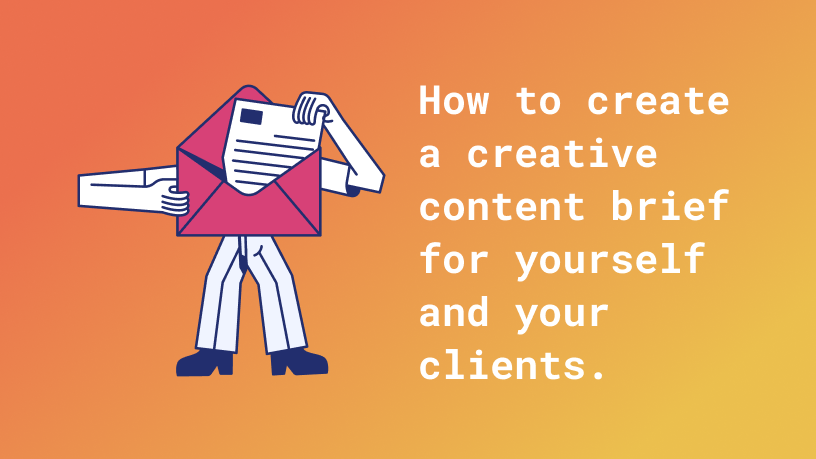Having a top-notch sales page set up for your products or services is an essential step towards selling your products online. However, many non-sales or marketing persons are naturally frightened by the word Sales. But rest assured, it’s not as bad as you might think!
And above all: Making money out of the product or service you put so much hard work into is nothing to be ashamed or frightened of.
A sales page should show your audience exactly what you’re offering and which problems you are solving. Additionally, you’ll make an offer right there and animate your user to buy from you. If your page lacks those critical parts, your audience probably won’t be interested.
So if you’re planning on launching your new service or product make sure to integrate following essential Must-haves for your first converting sales page.
1. Combine your features with benefits
Just stating that your product is built with, let’s say PHP 7 hardly makes anyone buy it. You need to tell people wich benefits this PHP version gives them.
Depending on your target audience, this benefit could be entirely different: If you address developers, you could mention that PHP 7 enables them to integrate your product into their modern tech-stack.
Your not-so-techy audience might be more interested in how fast your product is because of PHP 7, or how it’s more secure than services built with older versions.
Sometimes a feature is already a benefit and sometimes it can be hard to decide whether something’s a feature or advantage. Furthermore, it’s not necessary to add benefits to every single feature, but at least you should pair your key features up.
2. Know what you want your users to do
What is the goal of your page? Should people register for your SAAS, order your product or reserve a seat at your conference?
Once you’ve decided on a goal, you should place Call to Actions on your page. A Call to Action (C2A) could be a prominent button with the label “Register for our Free Beta” on it. Like the name already says, you’re inviting the user to take action and for example, register for your Beta. Two such buttons are usually enough, depending on your page’s length you could add more.
Because you’ve decided on a goal, you should make sure that your C2As are always leading to the same result, let’s say, a registration form. Of course, you may mix things up by providing your buttons with different labels.
Another important tip: avoid setting links which lead your users away from your page, or they might not come back.
3. Have a performant page
I don’t need to tell you the importance of performant websites, but on sales pages, this is exceptionally significant.
When people have to wait too long for your page to build, they’re more likely to leave and go somewhere else, and that’s something you should avoid. You’re missing out on users that could help spread the word about your excellent goods and of course potential buyers too.
4. Give your audience something to look at
Add some high-quality pictures or videos of your product or service to your page. Technical products or services are often very abstract, so by showing people something tangible, they might get a better feeling about what you’re offering.
Usually, people won’t buy stuff they don’t understand.
Let’s say you’re a programming coach and don’t have a real product to show. You could display a professional headshot of yours or a video in which you explain what you’re doing, etc.
5. Write an introduction that grabs people’s attention
The first heading and paragraph may already decide if a user leaves your site immediately or if he’s/she’s interested enough to have a better look at it.
Generally, it is a good idea to speak to people’s hearts, bring some emotion into your text by emphasizing with your audience’s problem you’re going to solve. Promise them something and later on your page, show how you’re keeping your promise.
Look at other sales pages (nearly every company or startup has one) and see how they’re doing it. Invest some time in finding out how exactly they’re grabbing your attention and learn from it. There is no better way to learn this, then by doing some research.
6. Don’t be an oracle – speak clearly
Avoid overly long sentences and create a good mix of short and long sentences. Also, make sure you don’t use super professional words to sound fancy or intelligent – use your audience’s vocabulary to show you’re one of them and not a know-it-all.
The right vocabulary is especially important when you have a non-techy audience! Many words and phrases you use in your daily life as a programmer are unknown to other people.
You need to keep this in mind while writing!
7. Show your audience some prove
If you’re starting out you probably won’t have any customers who could say something nice about you and your product. But don’t worry, they will come!
If you already have customers, ask them if you may publish their feedback with name and a portrait on your page. Don’t write the reviews yourself! And make sure you’re allowed to display people’s full name, ‘Lisa T.’ might not be believable enough for your audience.
If you don’t have any clients, you could tell a little bit about yourself. Where did you go to school? Do you have certificates? But be sure, this information is related to the product you’re offering. If you’re selling a CRM Tool, you could explain that you’re a certificated PHP programmer and worked for a company that specializes in programming custom CRM solutions.
Naturally, if you have real people’s feedback – go for it. If you neither have clients nor certificates, then that’s fine too. But make sure to update your page as soon as you get some reviews!
8. Answer your audience’s question
Before people buy your product there will be some questions in their heads, like:
- Can I afford this?
- What if I am not satisfied?
- What are the requirements to run this?
- Is it GDPR compliant?
First, you should think about what your audience might have on their mind. Do a survey or ask existing customers and people you know what their concerns would be and which questions they’d ask if they were to buy your product.
After you collected those questions, select the most important ones and start integrating them into your sales page.
The goal is to provide the user with answers before he even starts asking questions.
So, the answers to the questions above could be something like this:
- Offer different pricing plans or maybe even a discount for new users
- People are often afraid of binding themselves to something. You could offer a 30-day trial of your application or tell them how exactly they can get their money back if they’re not satisfied
- For most cases, it’s a good idea to get into technical detail on a subpage and just set a link on your sales page to it
- GDPR is a vast topic, and there’s still some uncertainty. You could provide the user with a part about security, where you mention the most important things you do to make sure your customer’s data is safe and sound.
By asking and answering your user’s question, you will also get a better view of how your target audience thinks and what their concerns are. So a win-win solution for both sides!
9. Show that you’re human
Tell your story and why/how you came to doing what you’re doing. Is your product solving a problem you faced yourself? Then go ahead and tell your readers about it. Show that you understand the situation and how you overcame it. Describe your mission and why you want to bring this solution to other people as well.
The personal or emotional part of your sales page can be very long; in fact, it probably can even be longer than your other components. That’s because people like buying stuff to which they have an emotional connection.

10. Mobile first
Your sales page should provide you with the best experience on a mobile device you’ve ever had.
People buy a lot of crazy stuff when it’s 10 pm, and they’re lying on their couch, with a glass of red wine in the one hand and their tablet in the other. Of course, you shouldn’t take advantage of slightly drunk people, but I want to prove a point: Mobile is getting more and more important (Oh I smell Buzzword Bingo), and therefore you should aim for a heavenly mobile experience!
What’s next
There’s so much more you can read and learn about sales pages, but I think I managed to cover some of the most important and most accessible points to make you a more comfortable start. I know that at some points, I’ve only described the tip of the iceberg, but I’m planning on doing some parts in detail with some examples as well in the future.
Do you have a sales page you want to discuss? Post your link in the comments, and I’m looking forward to seeing what you’re all creating 🙂





2 Responses
Hello Sarah, this was really helpful. Thank you so much!
Thanks a lot! Glad that my blog post could help you 🙂